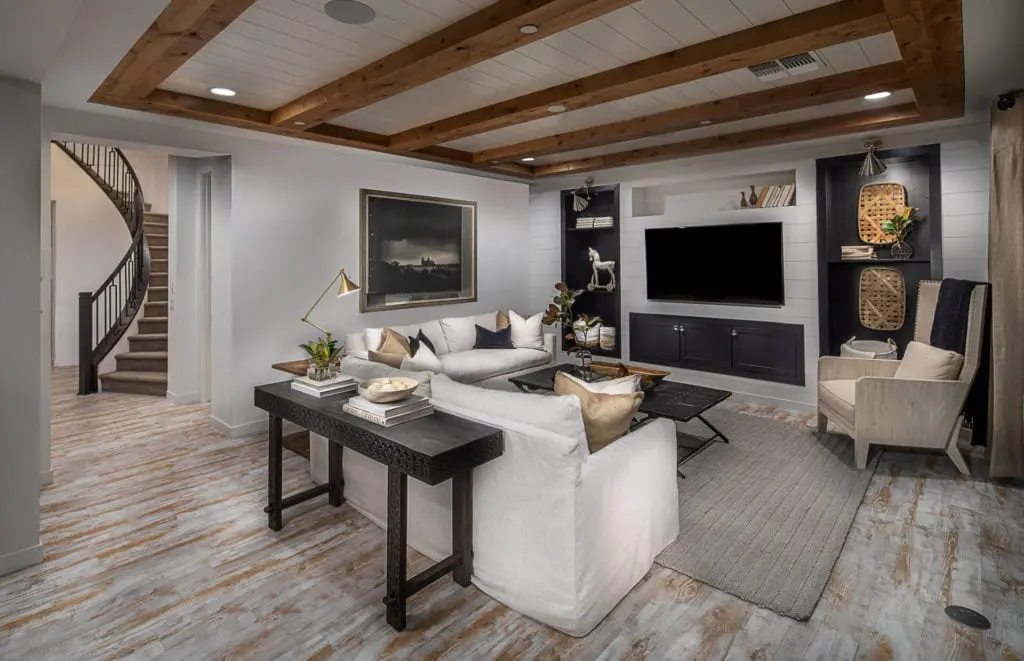
When you get to make design choice for a whole house, it can be fun to try out something new in every room. While it might be a bit jarring if you mix too many patterns and colors, design experts say you can achieve a coordinated but not too matchy-matchy style by repeating a few elements throughout your home.
“A fundamental principle of design is rhythm,” says Leigh Spicher, director of design studios for Ashton Woods, an Atlanta-based builder with communities in Arizona, Texas, Georgia, the Carolinas and Florida. “Just like in music, when a drumbeat repeats, you need some repetition and rhythm throughout your home.”
For example, Spicher says, when you install hardwood or tile flooring in a linear pattern, it’s best to have that pattern repeated in the beams on the ceiling to avoid dissecting the space.
“The focus for design in 2019 is to develop a curated look with a mix of styles,” says Angela Nuessle, national director of interior design for Pulte Group. “You don’t want to match everything, but you do need some connection between the rooms such as a clear style direction or similar colors.”
Playing with patterns
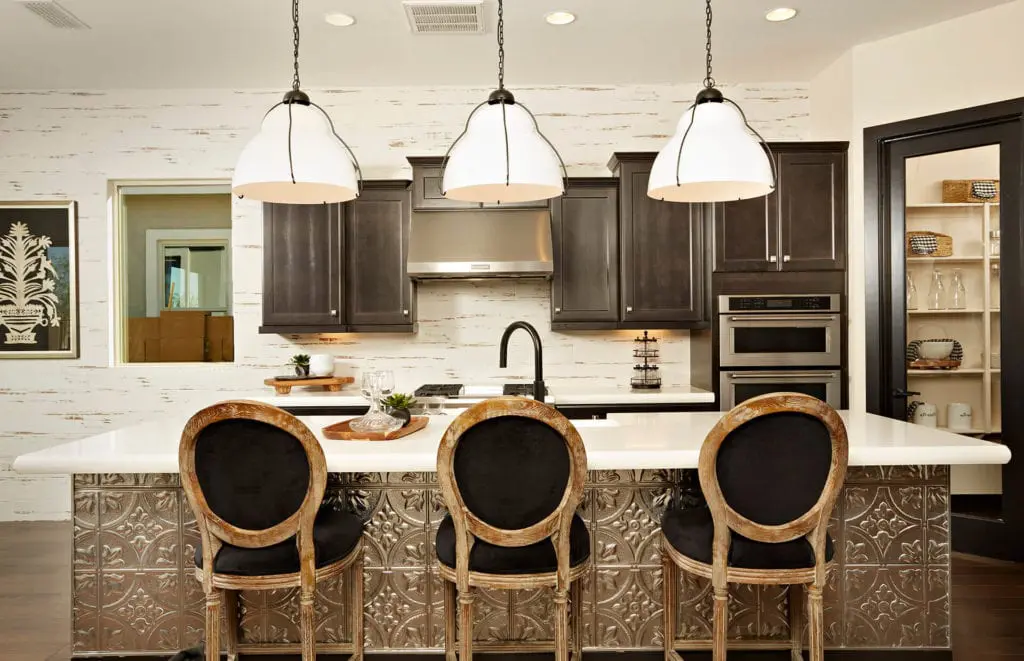
One way to make connections between your kitchen and bathrooms is to pick a tile pattern and then repeat that pattern in different rooms, says Lee Crowder, design gallery and model branding manager for Taylor Morrison and Darling Homes in Dallas.
“Most tile vendors offer the same tile in multiple sizes, such as 12-by-12 inches and 12-by-24 inches,” says Crowder. “You can also buy accent pieces or create your own by installing the tiles in a chevron or hexagon pattern in different spaces.”
You can also choose different tiles and colors for various spaces as long as you keep the same undertone in the color scheme, says Spicher. If you’re choosing to use different patterns, she says it’s important to keep the direction of the tiles the same, such as horizontal or vertical.
“Shiplap is popular for use in multiple rooms and it adds both texture and visual appeal,” says Spicher. “But since shiplap is linear, make sure everything in the space follows the same linear pattern.”
While Nuessle recommends coordinating tile from a manufacturer’s package with your flooring in bathrooms, she says in the kitchen your backsplash should be defined by your countertop.
“You can blend with your counters or just extend the countertop material up the wall,” Nuessle says. “Or if you want to keep it simple with a horizontal white subway tile in the kitchen, you can install the same tile in herringbone pattern in your bathroom and as a vertical tile in the kids’ bathroom.”
Color coordination
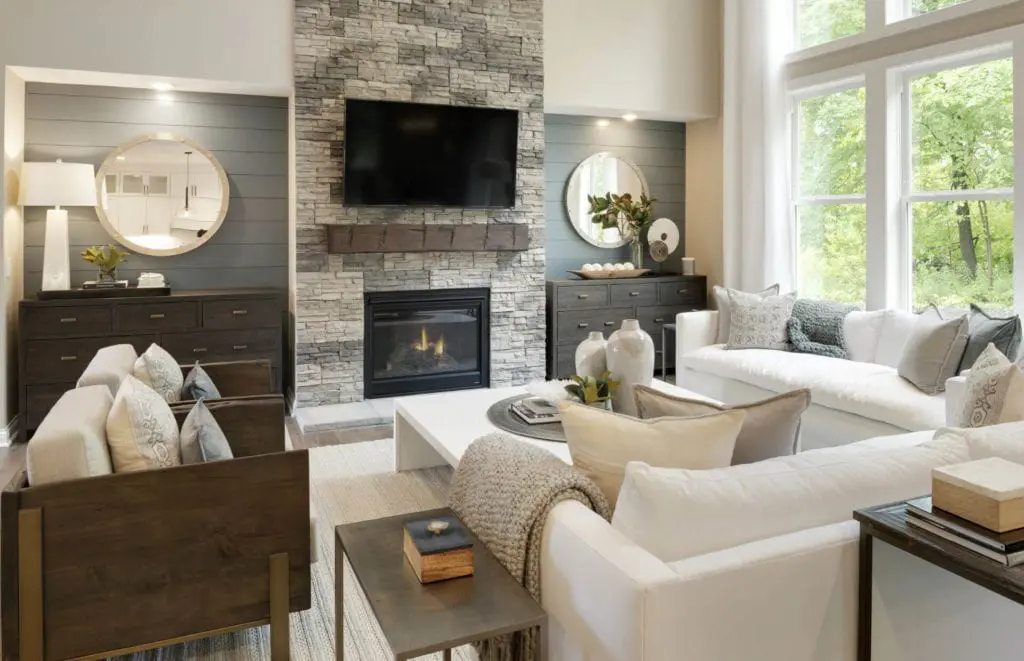
While you don’t have to paint your entire home one color, Crowder suggests selecting a paint palette from your builder’s vendor before going to the design center to make other selections.
“It’s smart to pick a neutral color for your hallways, kitchen and big social spaces first and then choose a color you can use for the ceiling and trim in every room of the house,” says Crowder. “Then you can pick four accent colors that work together.”
The accent color can be used on one wall in larger rooms or for an entire powder room, bedroom, study or laundry room.
“If you paint a dark taupe accent wall in your living area and then use that same paint for your bedroom, the rooms speak to each other and it pulls your house together without having it all one color,” says Nuessle.
If your home is 1,500 square feet or less, Nuessle suggests keeping the flooring the same throughout your home. Even in a larger home, designers recommend consistent floors such as wood or tile throughout your main living and dining areas as well as your kitchen to make your home feel cohesive.
“Your master bathroom floor needs to be special, though, and you can be more playful with your powder room or laundry room,” says Crowder. “Your secondary bathrooms should have the same flooring and your bedrooms should have the same carpet.”
Fabric and finishes
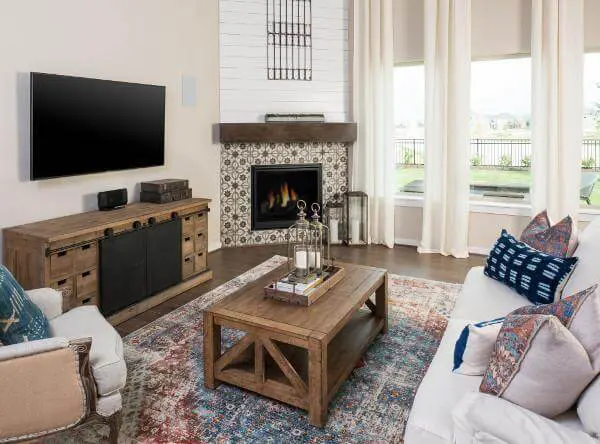
Another way to achieve the curated yet connected look in your home is to add texture with fabric drapes in one room and a sofa in that same fabric in another room, says Nuessle.
“One of the biggest design mistakes people make is to skip thinking about the visual representation of your home from the outside,” says Spicher. “You want to repeat the same lines in all your windows from the outside with shutters or blinds or the fabric lining. Inside, you also want to have the same rhythm, so aim to hang your draped from the same height in every room.”
Your lighting fixtures don’t all need to match, but they look best coordinated either in a similar style with different finishes or the same finish in different styles, says Crowder.
Mixed yet coordinated fixtures
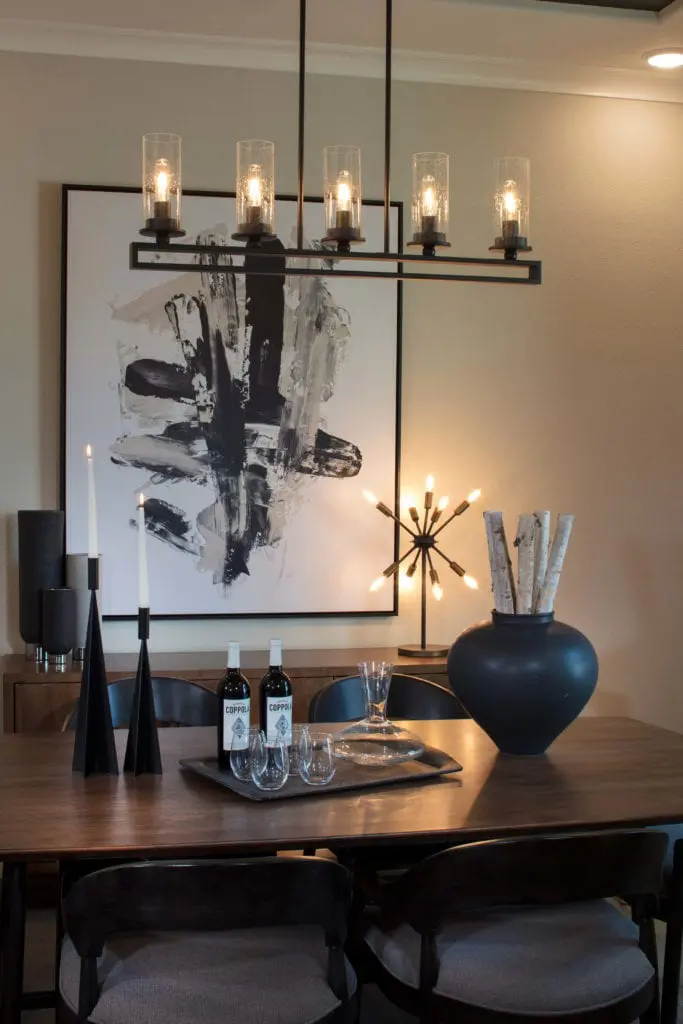
Whether you lean toward a contemporary, transitional or traditional style, creating a theme and repeating a pattern still leaves lots of room for creativity, says Spicher.
“If you like contemporary things, you can choose to have your door knobs, lighting fixtures, plumbing fixtures and cabinet fixtures all with squared edges for a repeated pattern but with different finishes so everything doesn’t match exactly,” says Spicher.
Mixed metals have been a trend since 2017, so more people are open to it, says Nuessle.
“We recommend sticking to just two finishes in one room because more than that looks mismatched,” she says. “For example, you want your cabinet pulls to match but then your kitchen lighting or faucet can be a different finish.”
While your new home offers an opportunity to express your design creativity, following a few guidelines and repeating a few colors, patterns or finishes provides a connected feeling that allows your personality to shine.

Michele Lerner is an award-winning freelance writer, editor and author who has been writing about real estate, personal finance and business topics for more than two decades.
 The 10 Best Places to Retire in Louisiana
The 10 Best Places to Retire in Louisiana